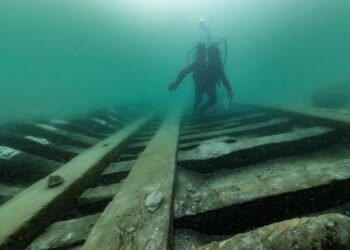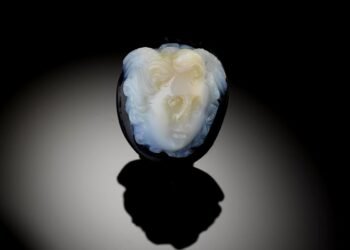A white marble bust believed to depict the face of the legendary Egyptian queen Cleopatra VII has been discovered beneath the outer walls of the Taposiris Magna temple complex near Alexandria, Egypt. The statue, depicting a woman wearing a royal crown, has led Dominican archaeologist Kathleen Martinez to suggest it could represent the Egyptian queen. However, not all scholars agree.
Martinez, who has led a joint Egyptian-Dominican excavation team at the site for over a decade, believes the statue likely portrays Cleopatra VII, the final ruler of the Ptolemaic dynasty.
Yet, former Egyptian Minister of Antiquities Zahi Hawass strongly disagrees. “I looked at the bust carefully. It is not Cleopatra at all; it is Roman,” he told Live Science. He emphasized that during Cleopatra’s era (51–30 BCE), pharaohs were typically depicted in an Egyptian style, whereas the statue displays Roman artistic traits. Other archaeologists have also posited that the statue may depict a princess or a noblewoman from the Roman period, rather than the queen herself.
Alongside the marble bust, the team unearthed a limestone statue of a king wearing the “nemes” headdress traditionally associated with pharaohs, although the king’s identity remains uncertain. A collection of 337 coins bearing Cleopatra VII’s likeness was also discovered, along with a range of other items: oil lamps, a bronze ring dedicated to the goddess Hathor, limestone vessels for food and cosmetics, and an amulet engraved with the phrase “Ra’s justice has arisen.”
These artifacts were part of a “foundation deposit,” a ceremonial cache of items buried to mark the start of construction on an important structure.
The Taposiris Magna complex, founded around 280 BCE, features a temple dedicated to Osiris and Isis and remnants of a Greek-era temple destroyed between the 2nd century BCE and the early Roman period. Archaeologists have also uncovered an extensive tunnel system connecting Lake Mariout to the Mediterranean Sea and a necropolis containing at least 20 tombs.
Underwater excavations near the site revealed additional human remains, pottery, and submerged structures, highlighting the region’s gradual submergence over centuries. The Egyptian Ministry of Tourism and Antiquities described these findings as pivotal to understanding the late Ptolemaic period.























I think ole Zahi is wrong about the marble bust. It’s totally Cleopatra. She immediate the Romans because she was looking for support from them during those rough times of Cesarean her child not having a definitive future. And her country in jeopardy. She had to pick a winning team